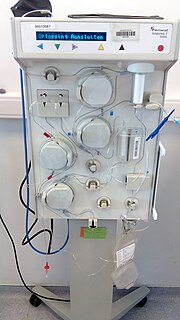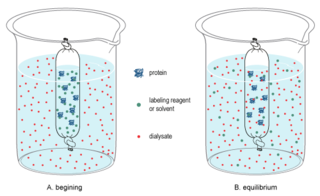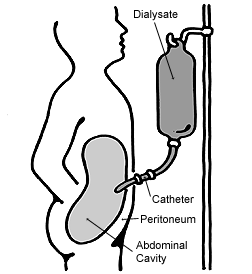Origin
The Dialytrauma Concept was introduced into medical literature in 2008 by a Spanish group of intensivists. [2] The idea was born as a consequence of the publication of the first major trial (known as the ATN Study [3] ) looking at the intensity of renal support in critically ill patients with acute kidney injury (AKI). In this multicenter, randomized, controlled trial, renal support was delivered using different RRT modalities: intermittent hemodialysis, sustained low-efficiency dialysis, or continuous venovenous hemodiafiltration. The main result of this study (including 1,124 patients) was that a fixed “intensive” dose (35 mL/Kg/h) delivered with different RRT modalities, produced the same clinical outcomes than a “less-intensive” dose (20 mL/Kg/h). The authors’ conclusion was that critically ill patients with AKI requiring RRT should be treated with this “less-intensive” dose, given that it will achieve the same results as the “intensive” one. Nevertheless, the rate of complications and adverse events detected was higher in the “intensive” dose arm of this study. As such, the aforementioned Spanish group of intensivists, wrote a letter to the Editor of the same Journal[2] postulating the idea that all those complications (grouped under the term “Dialytrauma”) could have been responsible for the results of the ATN Study. In the same letter to the Editor, and according to what had been previously published by Dr. Schiffl, [4] they hypothesized that a dynamic adjustment of the dose of RRT, would be more physiological due to the dynamic nature of AKI in critical illness. This therapeutic schedule, named “Dynamic Approach”, would reduce the incidence of dialytrauma and, probably, would achieve better clinical outcomes.

Acute kidney injury (AKI), previously called acute renal failure (ARF), is an abrupt loss of kidney function that develops within 7 days.

Hemodialysis, also spelled haemodialysis, or simply dialysis, is a process of purifying the blood of a person whose kidneys are not working normally. This type of dialysis achieves the extracorporeal removal of waste products such as creatinine and urea and free water from the blood when the kidneys are in a state of kidney failure. Hemodialysis is one of three renal replacement therapies. An alternative method for extracorporeal separation of blood components such as plasma or cells is apheresis.
However, given the lack of level 1 clinical trials on this “Theory of Dynamic Approach”, the authors of the ATN Study branded this idea as being “speculative”. [5] Despite this, a year later Dr. Palevsky (ATN Study’s first author) wrote an Editorial comment [6] on the RENAL Study [7] (the second major trial looking at the intensity of renal support) concluding that the:
Failure to demonstrate improved outcomes with more intensive renal-replacement therapy in critically ill patients […] does not imply that the intensity of renal-replacement therapy does not matter. [...] Furthermore, it should not be forgotten that patient care needs to be individualized – more intensive therapy may be required for the treatment of hyperkalemia, metabolic acidosis, or extreme hypercatabolism – and that the true adequacy of renal-replacement therapy is defined by more than just the clearance of small solutes.— Palevsky PM,«Renal Support in Acute Kidney Injury — How Much Is Enough?» (2009)N Engl J Med361(17):1699-1701.
In this way, finally, he seemed to support the Theory of Dynamic Approach, that is: we need to tailor the RRT dose to the clinical scenario of the individual patient.
From then on, both the Dialytrauma Concept and the Theory of Dynamic Approach have been referenced in several publications by impact groups in the field of RRT. [8] [9] [10]















